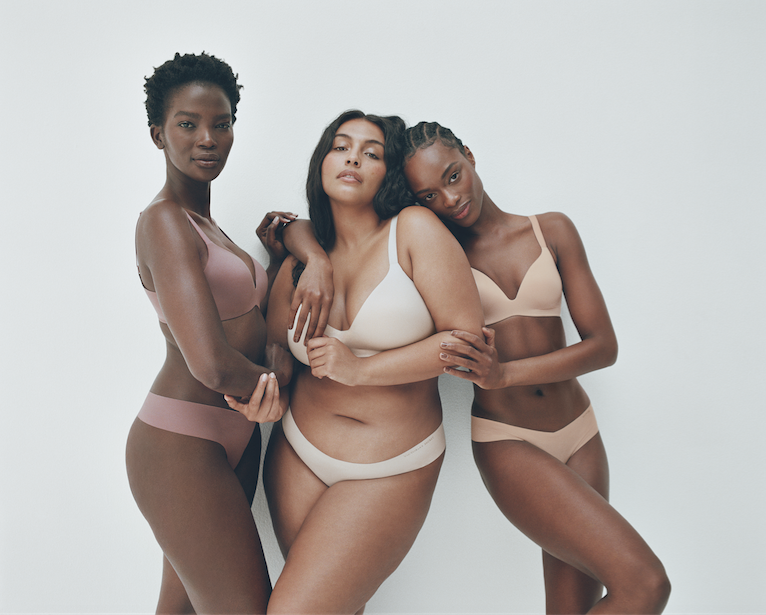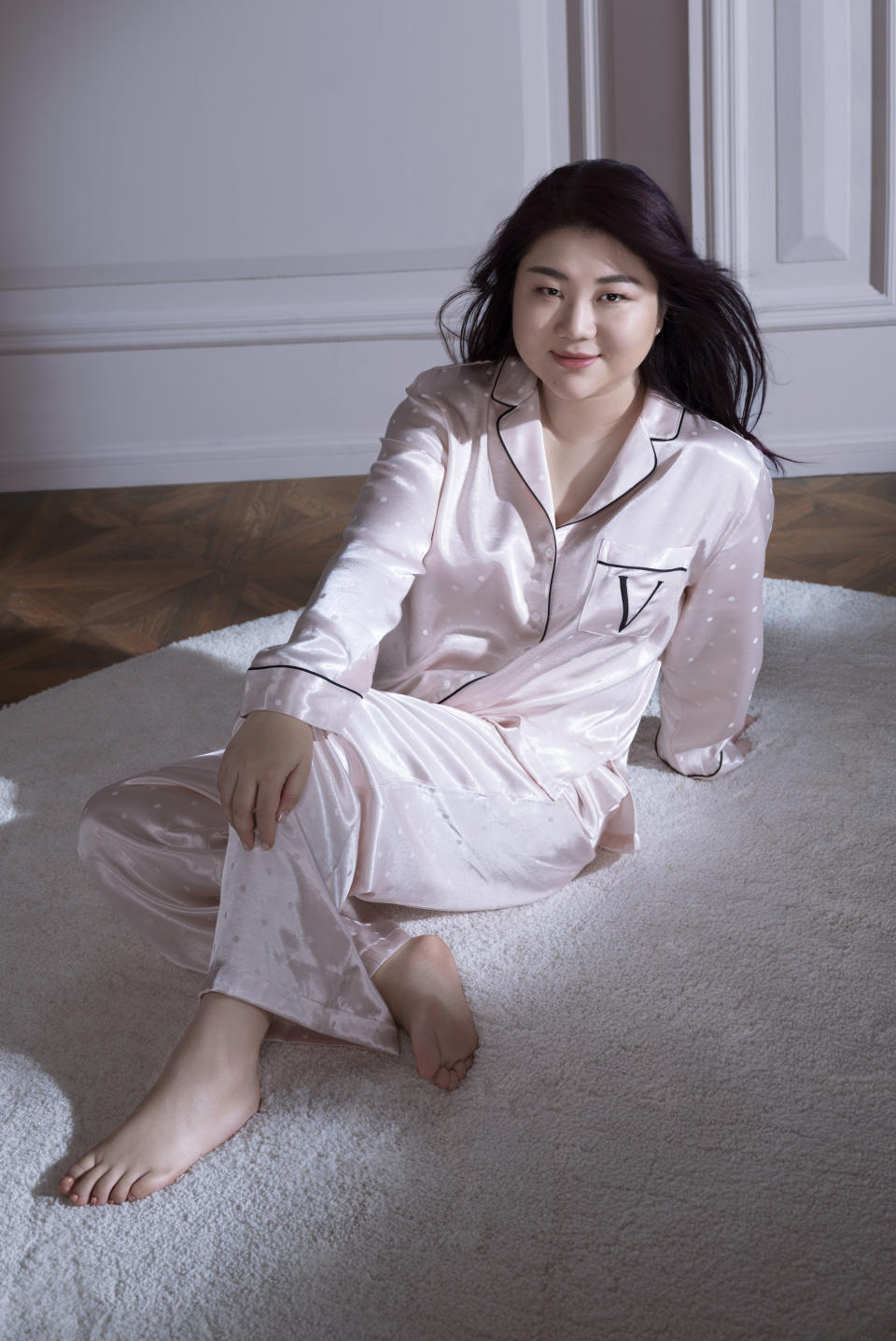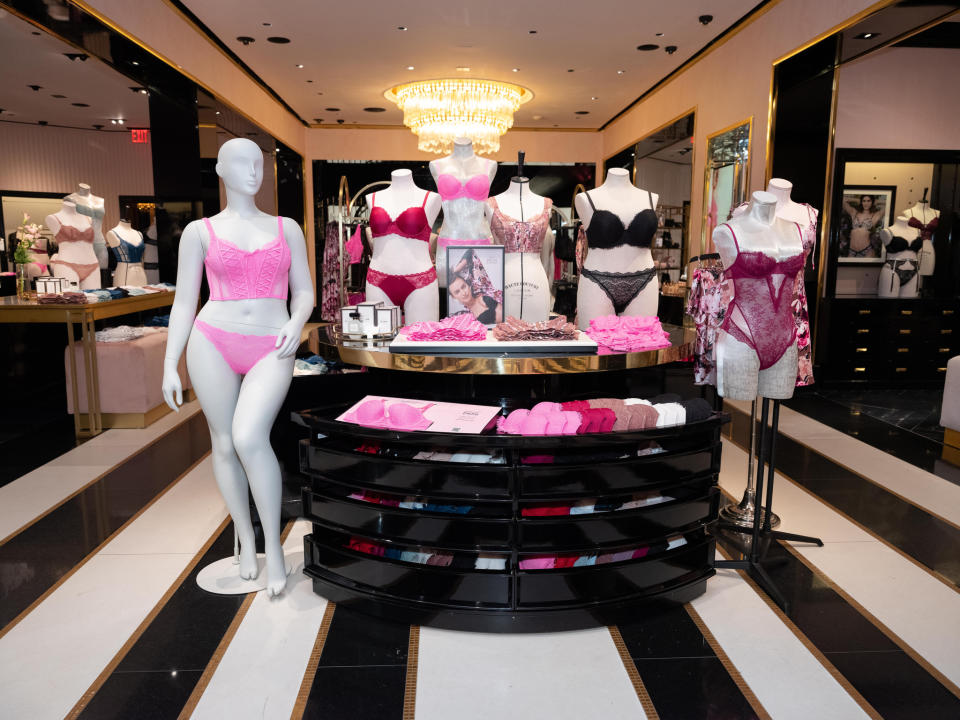The New Victoria’s Secret

Victoria’s Secret looks a little different these days.
Gone are the Angels, dark fixtures and strobe lights inside stores. In their place are lightly colored walls, full-length mirrors and plus-size mannequins. The website is more toned down, too, with images of product in the spotlight, rather than near-perfect models.
More from WWD

Courtesy Photo
The lingerie brand’s makeover is part of the new Victoria’s Secret & Co., which, along with Victoria’s Secret Beauty and Pink, recently split off from the Bath & Body Works brand in what used to be L Brands in an attempt to grow both businesses.
While Victoria’s Secret is still the market share leader in the U.S. intimates apparel space, the brand’s revenues and slice of the pie have been dwindling in recent years (32 percent in 2015 to around 20 percent today, according to market research firm The NPD Group), as consumers shift toward more inclusive brands that offer comfort.
After plans fell through to sell a majority stake of the Lingerie, Beauty and Pink divisions to private equity firm Sycamore Partners in early 2020, the company began to consider a spin-off that would include a dramatically different look.

Courtesy Photo
The results (so far) include the VS collection, an initiative consisting of women from assorted backgrounds — such as mental health advocate and model Adut Akech; World Champion freestyle skier Eileen Gu; professional soccer player and LGBTQ activist Megan Rapinoe; actress and entrepreneur Priyanka Chopra Jonas, and plus-size model Paloma Elsesser, among others — who will share their stories by way of collaborations, campaigns and social media; an updated store fleet; a string of senior-level hires, including a majority female board of directors (six out of seven), and new products in stores, such as more swimwear, athleisure and maternity bras, all in an attempt to regain consumer trust and grow revenues.
“I have a bold ambition that Victoria’s [Secret] should be the world’s biggest and best advocate for women,” Martin Water, CEO of Victoria’s Secret Lingerie, told analysts earlier this year.
But will it work?
Consumers seem to think so — at least some of them. In Victoria’s Secret’s first quarter reporting as a stand-alone company, the retailer registered $1.6 billion in quarterly revenues, up from $1.06 billion the previous year, with strength across all channels and fewer promos. This helped the company log $151 million in profits.
Initial reception on Wall Street was also good, with shares closing up nearly 30 percent on the company’s Aug. 3 debut. And with 88.3 million shares of common stock outstanding, Victoria’s Secret’s market cap was worth about $5.2 billion — far above the $525 million price tag that Sycamore had planned to pay.

Courtesy Photo
Since then, shares of Victoria’s Secret & Co., which closed down 0.93 percent to $66.30 apiece Tuesday, have risen approximately 25 percent.
“VS is finally selling less and charging more and we see material and ongoing earnings upside from here,” Simeon Siegel, managing director and senior retail analyst at BMO Capital Markets, wrote in a note. “Despite the run in the shares, we continue to believe this remains the greatest point of investor under-appreciation.”
There’s also Victoria’s Secret’s massive store fleet, which “is a huge advantage for us,” Greg Unis, chief executive officer of Victoria’s Secret Beauty, told WWD in July. That’s because most of the 867 stores turn a profit of roughly $900,000 and have 3.8 years left on their leases, on average, leaving room for negotiations, according to executives at the investor day.

Andrew Morales / WWD
And there’s no escaping the fact that many of these stores are in parts of the country that offer few, if any, other options for trying on bras in real life. There’s also the Victoria’s Secret name, which holds equity, and the fact that many consumers are notoriously fickle when it comes to product loyalty.
“I do think there will be some people who will say, you know what? [Victoria’s Secret] is not where I want to be. That’s maybe not the right kind of space for me to be in,” Martha Pease, Victoria’s Secret’s chief marketing officer, told WWD in June. “But I’m not anticipating that’s going to be a huge barrier. We’re going to be better positioned not to lose the historic relationship we’ve had with women, but to make it relevant. Our big issue is relevance. We’re very focused on how do we bring this brand into a very relevant position with consumers? But also relevant to fashion. And also relevant to just the world of cultural conversations.”
Sign up for WWD's Newsletter. For the latest news, follow us on Twitter, Facebook, and Instagram.